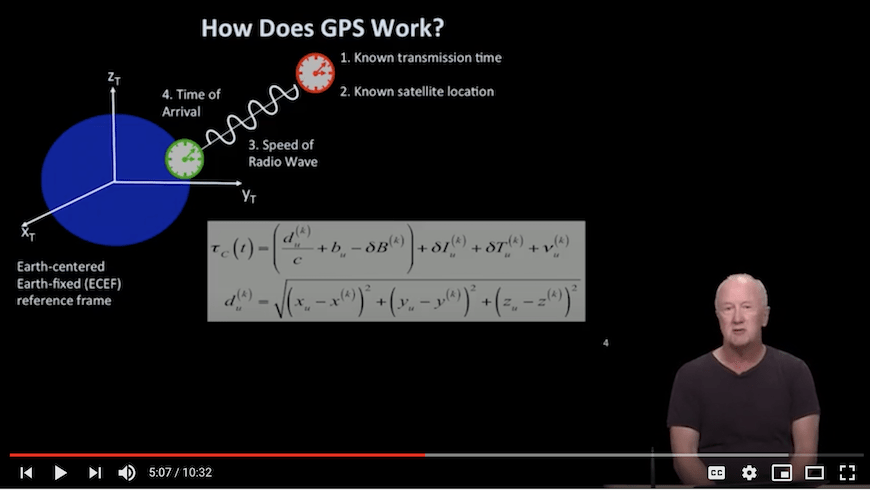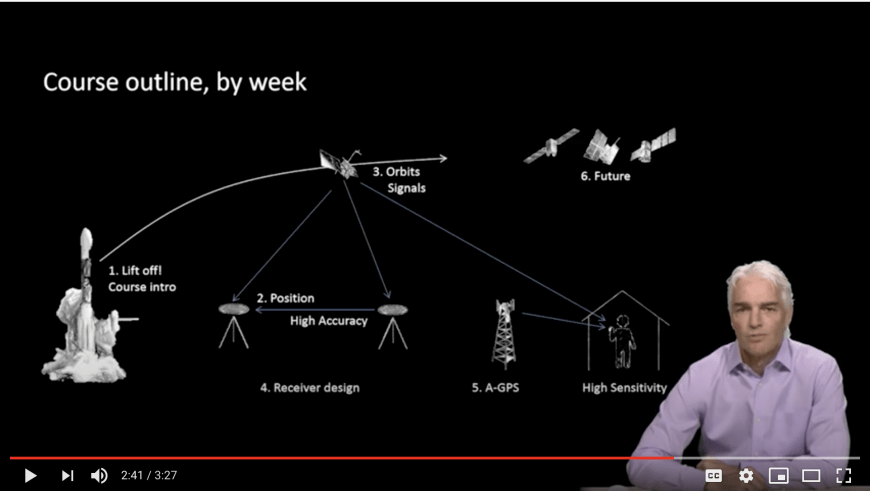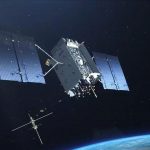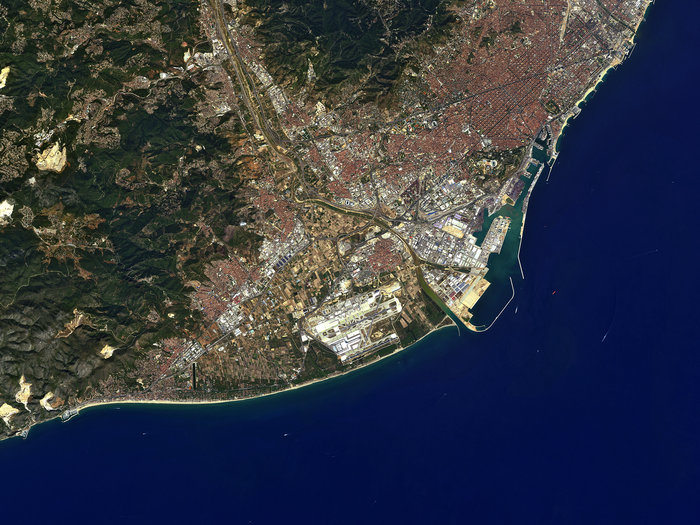Just like the kids valiantly doing their homework during this strange, removed time, PNT enthusiasts young and old around the world can put their isolation to good use by honing skills at home. “GPS: An Introduction to Satellite Navigation,” the massive online open course created by Frank van Diggelen and the late Per Enge, is available on YouTube.
Originally created for Stanford University in 2014, and once hosted by Coursera, the free course runs to 65 episodes, conveniently sized at 10–20 minutes each. In its first form, it included a worldwide laboratory involving thousands of participants. Its current location is here.
As the two creators recalled in a 2015 paper presented at ION-GNSS, the curriculum “made use of smartphones to create a worldwide laboratory for experiments conducted by the students. Since each smartphone contains a GNSS receiver, students could get hands-on experience, while at the same time collecting data on an unprecedented scale. The main idea of the laboratory was pedagogical: to teach the students about GNSS, and so the labs were conceived to be relatively simple. But the sheer scale of the class was such that we obtained very interesting results which we will present in this paper for the first time.”
The first lab studied GNSS accuracy, as experienced by smartphone users, both in the open and in urban environments. In the second lab, the students performed mission planning to predict when a particular satellite would pass (close to) overhead on one particular day. They then had to go outside at that time, and see if the GNSS receiver observed the satellite where it was expected. In the third lab the class returned to quantitative analysis of GNSS. Students, after learning about GNSS Front End analysis, compared the measured C/No in their phones to the expected value for a nominal design.
While the original Coursera course ran the labs at the same time for all participants, each lab is described in the YouTube videos and is still perfectly valid for individual viewers to try, using their cell phones. Viewers can compare their results to the aggregate results published in the ION paper, which is titled “The World’s first GPS MOOC and Worldwide Laboratory using Smartphones.”

The complete list of available videos runs as such:
1.1 Course outline
1.2 GPS: how and why?
1.3 The Joy of GPS
1.4 Course description
1.5 Schedule & logistics
1.6 Satellites
1.7 Navigation message
1.8 Navigation signals
1.9 Pseudoranging
1.10 Performance: first look
2.1 Pseudoranges & errors
2.2 Linearization
2.3 Solving nav equations
2.4 Dilution of precision
2.5 GPS error budgets
2.6 Differential GPS
2.7 DGPS error budget
2.8 Ionospheric effects
2.9 Dual Frequency GNSS
2.10 Landing airplanes
3.1 Brahe, Kepler, Newton
3.2 Coordinate frames
3.3 Keplerian to ECEF
3.4 The GPS Nav message
3.5 L band
3.6 Frequency domain
3.7 Amplitude spectra
3.8 Auto/Cross-correlation
3.9 New GNSS signals
3.10 Exxon Valdez disaster
4.0 Overview
4.1 Path loss, dB
4.2 Antenna gain
4.3 Link budget
4.4 C/No
4.5 Mixers
4.6 Rx architecture
4.7 Acq search space
4.8 GPS in sports
5.0 Overview
5.1 Intro to A-GPS
5.2 A-GPS Acq search
5.3 Bin width
5.4 Cold start
5.5 Ideal coherent
5.6 Coherent int
5.7 Limits to Coherent
5.8 I,Q channels
5.9 High Sensitivity
5.10 App for that
6.0 O’view of Module
6.1 O’view of all GNSS
6.2 GPS, Orbits
6.3 GPS, Signals
6.4 GLONASS
6.5 QZSS
6.6 BeiDou
6.7 Galileo
6.8 IRNSS
6.9 Update of all GNSS
6.10 Why all these sats?
6.11 GNSS Zoo
6.12 GPS Everywhere
7.0 Lab Results
7.1 What’s Next
Each of the six main sections concluded with a video called “Navigation in our lives.” These focused on a specific implementation of navigation, including landing airplanes, the Exxon Valdez disaster, sports applications, and GPS apps in smartphones.
Once again, that YouTube url is here. Good learning, God speed, and stay safe.






